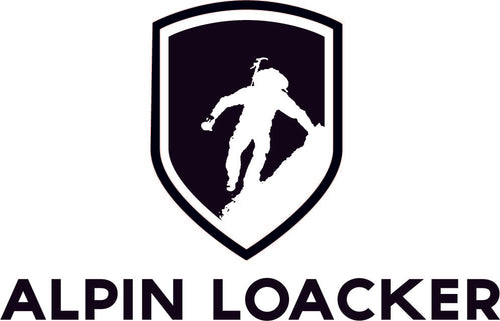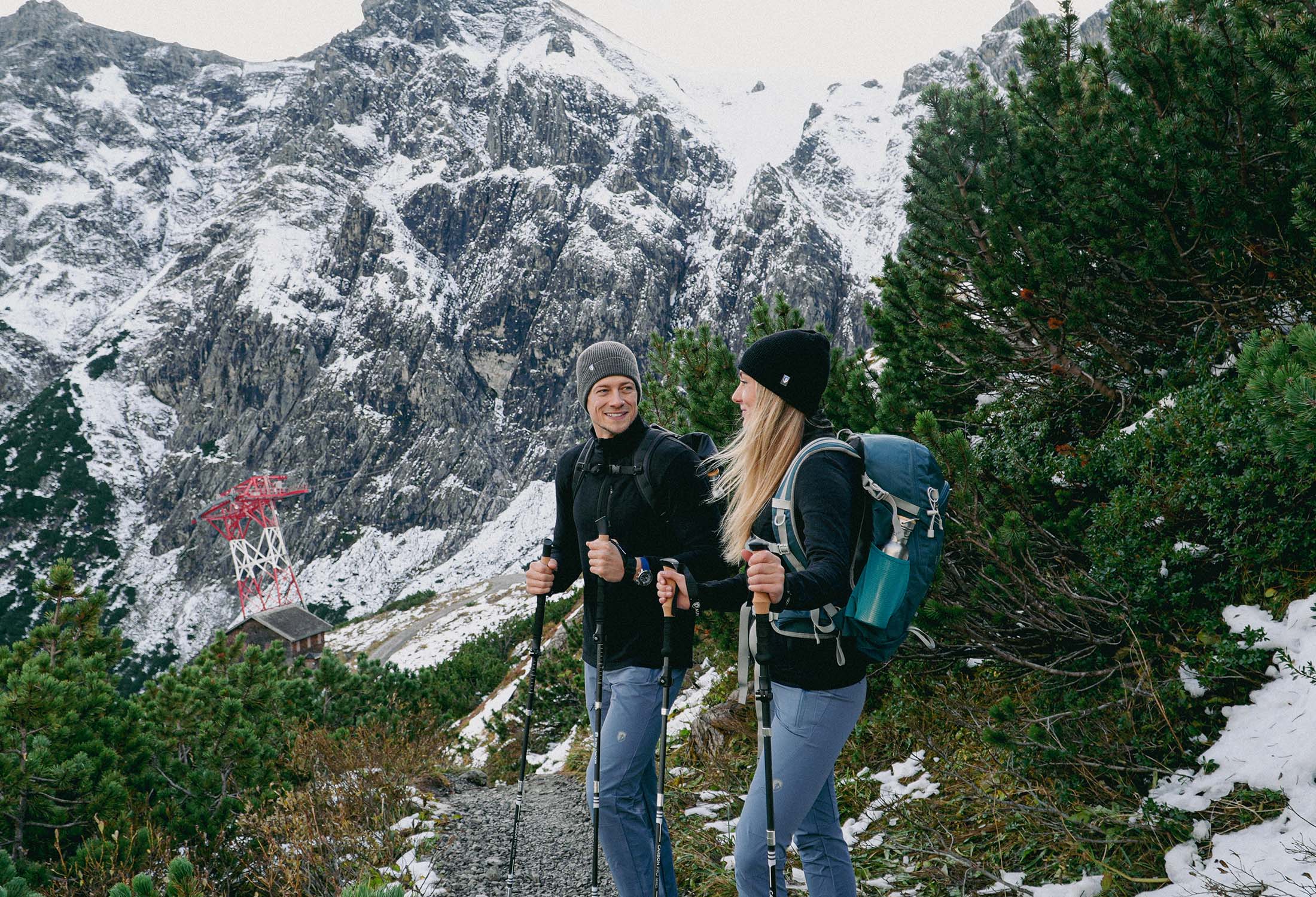Blisters on your feet while hiking can really ruin your mood. Every further step quickly becomes a torment and the joy of the outdoor adventure fades away. To ensure you can enjoy every tour blister-free from now on, we have put together suitable tips for you.
We show you how to avoid blister formation with simple tricks and what you can do in an emergency to continue hiking pain-free with a blister. This way, you can master every trail with ease. Sounds good, doesn't it?
Typical Causes of Blisters While Hiking
A blister on the heel or toe doesn't occur randomly while hiking. There are various causes. These are:
-
Heat: Especially in the warm season, blisters on the feet quickly form while hiking. The temperature rises in the shoes and is increased by friction. If you don't give your feet a break in between, blisters are inevitable.
-
Moisture: Not only in summer does excessive moisture cause blisters while hiking. Sweating on the feet is a year-round issue for many hikers.
-
Pressure and Friction: If shoes don't fit properly, a pressure point forms. Slipping socks cause friction. Both have unpleasant consequences for your feet.
- Anatomical Causes: For some people, it's almost normal to hike with a blister. Regardless of the footwear, they bring back an unpleasant souvenir from every tour. The cause usually lies in a foot deformity such as flat feet or splay feet.

What Can I Do Against Blisters While Hiking?
There are as many tips against blisters while hiking as there are grains of sand on the beach. But do they really deliver what they promise? We've tested them for you and show you our favorites for blister prevention.
1. Wear Suitable Hiking Boots
The most important point to avoid hiking with a blister concerns the suitable footwear. This way, you can avoid the most common causes such as pressure points, slipping, and heat buildup from the start. A hiking boot should always fit perfectly and match the shape of your foot.
Many manufacturers now provide appropriate indications as to whether the shoe is more suitable for wide or narrow feet. This is one of the most important orientation points. However, even if the shoe matches your foot shape, it doesn't necessarily mean it fits perfectly. Because also the
- Shaft height,
- Lacing
- and Padding play an important role.
Additionally, you should also pay attention to the best possible breathability to avoid sweat formation.
When selecting your hiking boots, you should therefore take sufficient time and not choose the price as the top criterion. Good hiking boots You should not skimp on your feet (and your back) for the sake of love.
If you have found really good hiking boots and want to keep them for a long time, then read this post immediately afterwards: Caring for and cleaning hiking boots like a pro
2. The right socks against blisters when hiking
Socks against blisters when hiking are also important. Unfortunately, their function is often underestimated. Socks with a high cotton or elastane content prevent optimal air circulation. Poorly fitting socks have no place on a hike.
An optimal companion is breathable socks with a perfect fit like Merino socks. Even if it may sound paradoxical at first glance to wear wool socks all year round, you will definitely never want to be without them again! Bet? Merino clothing is
- breathable,
- cozy soft
- and offers you an incredible wearing comfort.
Thanks to their temperature-regulating properties, you won’t sweat. Smelly feet and shoes are a thing of the past with Merino socks.
The natural product reliably prevents any odor formation. Even after wearing them multiple times, your socks and shoes smell absolutely fresh.

3. Blister plasters or tape for prevention
If you are wearing new shoes or are prone to blister formation due to your foot shape, you should use tape for blisters when hiking as a precaution. Even if you feel friction or pressure while on the go, a blister plaster or tape is important for prevention.
Expert tip: These special products are breathable and provide additional cushioning to protect your feet as best as possible.
4. Take breaks early
Pausing early is one of the simplest options, but it can be particularly difficult for some hikers. Those who are highly motivated or want to complete a certain section before nightfall are naturally more inclined to keep going. However, long stretches without a break can quickly take their toll.
How can I prevent blisters while hiking?
With 2 simple tricks, you can prevent blisters while hiking. The best part: both measures are absolutely free to implement. The only thing you need is time.

1. Regular barefoot walking
You might be wondering what barefoot walking has to do with preventing blisters while hiking. After all, you're not wearing shoes when doing so. However, regular barefoot walking is one of the best ways to train your feet. On one hand, it optimizes your gait.
On the other hand, you "toughen" your feet. A natural protective layer forms on your soles, making your feet resistant to blister formation.
2. Break in hiking boots in time
If you set out on a tour with new hiking boots, open blisters while hiking are almost guaranteed. Therefore, it is ALWAYS important to break in your shoes in time. Take it as slowly as possible and gradually increase the wearing time.
We recommend wearing new hiking boots indoors for a few hours before taking your first shorter walk with companions. Once you feel comfortable wearing them, there is nothing standing in the way of your first hike together!
Treating hiking blisters: Tips for quick healing
Ouch! If you've brought home blisters as a souvenir from hiking, it's quite painful. Want to know how to best treat them? The following tips ensure quick healing:
-
Avoid opening blisters if possible! They contain fluid that protects deeper skin layers from further injury and aids in healing.
If you open the blister, there is an additional risk of infection. A blister plaster speeds up healing and relieves pain.
-
With a large blister, on the other hand, you are so restricted that every further step becomes a torture. In this case, you can puncture the blister. However, you must pay attention to absolutely sterile conditions to avoid an infection.
Sterilize the needle and the surrounding tissue first with alcohol. Then pierce the skin at the edge of the blister so that the blister serum can drain. Afterwards, treat the wound with an antiseptic ointment and a band-aid.
- An open blister from hiking should always be disinfected, treated with a healing ointment, and covered with a well-padded wound dressing. This also applies to blisters that have opened on their own.
Conclusion
Blisters while hiking are a serious issue and should not be taken lightly. With the right hiking boots and merino socks, you can actively practice blister prevention. Regular breaks and breaking in your shoes also significantly contribute to protection.
If you do get an open blister while hiking, treat it as soon as possible on the spot. This also applies to closed blisters. Only then can you continue your tour without worries.
FAQ
How long does it take for blisters on the feet to go away?
The healing time of a blister depends on the size and location. It usually takes between a few days to 3 weeks for blisters on the feet to go away.
Should I open the blister or not?
You should avoid opening small blisters if possible. If a very large blister hinders your further hike, you can open it with a sterile needle. Be sure to follow up with wound care!
Can I hike despite having blisters or should I rather pause?
You can cover a small, closed blister with a blister plaster and continue hiking. Large or open blisters, however, require a longer break.
Don't miss interesting information and read our other posts.


